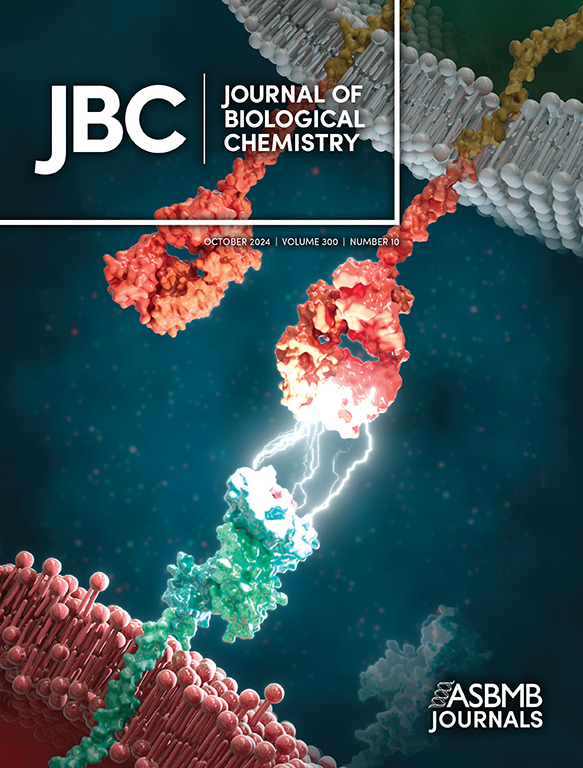Functional Genomics and Structural Insights into Maize Aldo-Keto Reductase-4 Family: Stress Metabolism and Substrate Specificity in Embryos
IF 4
2区 生物学
Q2 BIOCHEMISTRY & MOLECULAR BIOLOGY
引用次数: 0
Abstract
Aldo-keto reductases (AKRs) are ubiquitous in nature and are able to reduce a wide range of substrates, from simple sugars to potentially toxic aldehydes. In plants, AKRs are involved in key metabolic processes including reactive aldehyde detoxification. This study aimed to i) delineate a maize gene family encoding Aldo Keto Reductase-4s (AKR4s) ii) help bridge sequence-to-function gaps among them, and iii) focus on a family member implicated in embryo specific stress metabolism. We employed a genome-wide analysis approach to identify maize genes encoding AKR4s, defining and annotating a 15-member gene family that clustered into three subgroups. Expression profiling, validated through wet lab experiments, revealed distinct functional roles: i) AKR4C Zm-1 functions in aldehyde detoxification during stress, ii) AKR4C Zm-2 includes stress-responsive AKRs with diverse substrate affinities, and iii) AKR4A/B Zm-3 contributes to specialized metabolites like phytosiderophores for iron transport. To investigate the impact of sequence variation on function, we characterized ZmAKR4C13, a representative of AKR4C Zm-1. Its mRNA and protein were predominantly localized in embryos, suggesting a specialized role. Recombinant ZmAKR4C13 efficiently reduced methylglyoxal and small aldehydes but showed poor activity toward aldoses larger than four carbons. Crystallographic analysis identified a size constraint at the active site, attributed to the bulkier LEU residue at position 294. Collectively, our results emphasize how subtle modifications in active-site architecture influence AKR substrate specificity. They also demonstrate a potential role of maize ZmAKR4C13 in detoxifying methylglyoxal and other small metabolites that could contribute to stress signaling in embryos.玉米醛酮还原酶-4家族的功能基因组学和结构分析:胚胎的应激代谢和底物特异性
醛酮还原酶(AKRs)在自然界中无处不在,能够还原各种底物,从单糖到潜在有毒的醛。在植物中,akr参与了包括活性醛解毒在内的关键代谢过程。本研究旨在i)描述一个编码Aldo Keto reducase -4s (AKR4s)的玉米基因家族;ii)帮助弥合它们之间的序列-功能差距;iii)关注一个与胚胎特异性应激代谢有关的家族成员。我们采用全基因组分析方法鉴定了编码AKR4s的玉米基因,定义并注释了一个15个成员的基因家族,该基因家族分为三个亚群。通过湿实验室实验验证的表达谱分析揭示了不同的功能作用:1)AKR4C Zm-1在逆境中发挥醛解毒作用,2)AKR4C Zm-2包括具有不同底物亲和力的应激响应akr, 3) AKR4A/B Zm-3参与铁运输的植物铁载体等特殊代谢物。为了研究序列变异对功能的影响,我们对AKR4C Zm-1的代表基因ZmAKR4C13进行了表征。其mRNA和蛋白主要定位于胚胎,表明其具有特殊的作用。重组ZmAKR4C13能有效还原甲基乙二醛和小醛,但对大于4碳的醛糖活性较差。晶体学分析发现活性位点存在尺寸限制,原因是294位的低浓铀残基体积较大。总的来说,我们的结果强调了活性位点结构的细微变化如何影响AKR底物特异性。他们还证明了玉米ZmAKR4C13在解毒甲基乙二醛和其他可能有助于胚胎应激信号的小代谢物方面的潜在作用。
本文章由计算机程序翻译,如有差异,请以英文原文为准。
求助全文
约1分钟内获得全文
求助全文
来源期刊

Journal of Biological Chemistry
Biochemistry, Genetics and Molecular Biology-Biochemistry
自引率
4.20%
发文量
1233
期刊介绍:
The Journal of Biological Chemistry welcomes high-quality science that seeks to elucidate the molecular and cellular basis of biological processes. Papers published in JBC can therefore fall under the umbrellas of not only biological chemistry, chemical biology, or biochemistry, but also allied disciplines such as biophysics, systems biology, RNA biology, immunology, microbiology, neurobiology, epigenetics, computational biology, ’omics, and many more. The outcome of our focus on papers that contribute novel and important mechanistic insights, rather than on a particular topic area, is that JBC is truly a melting pot for scientists across disciplines. In addition, JBC welcomes papers that describe methods that will help scientists push their biochemical inquiries forward and resources that will be of use to the research community.
 求助内容:
求助内容: 应助结果提醒方式:
应助结果提醒方式:


